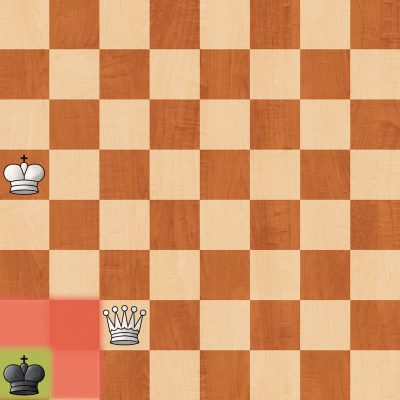
There are few things not just in Chess, but in life, that are more frustrating than seeing the dreaded Stalemate announcement when you were clearly dominating your opponent and should have easily gotten the victory.
When I started playing on Chess.com, I had many games that resulted in a stalemate with me in utter disbelief with no clue why or how the game concluded with this. This page is meant to clarify what a stalemate is, how it happens so you know how to avoid this if you can.
What is a Stalemate?
A Stalemate is one of the draw rules in Chess and occurs when the the player who whose turn it is has no legal moves to make. Not to be confused with checkmate. Stalemate is when the player does not have a legal move to make and is also not in check. When Stalemate is declared, the game is over with the result being a draw, even if a player has a significant material advantage.
Stalemates are most commonly seen in the endgame while a King is being attacked by multiple pieces. The player doing the attacking needs to be cautious while attacking the opposing King making sure there is a legal move that can be made after every turn until checkmate.
Examples of Draw by Stalemate
Example #1
This game is one of mine that I recently played, the game resulted in a draw by stalemate which was a victory for me because I was completely losing the game. My opponent however, didn’t see that he would be leaving me without a legal move to make.
Example #2
This example is from a game that took place in 1995 between Johan Upmark and Robin Johansson that earned the title, “A Stale Joke”. The game ended in a Stalemate after just ten moves.
Black has no legal move and therefore, the game automatically ends in Stalemate.
When Stalemates Commonly Occur
Stalemates usually occur by accident when one side is up a Queen and isn’t paying full attention while attacking the enemy King, even more common when the player is also low on time and is making quick moves toward the King to get into a better position to deliver a checkmate pattern.
So you must remember to take more calculated moves while attacking the opposing King and make sure the player will be able to have at least one legal move in order to avoid stalemates.
I hope this article on the Stalemate rule in Chess helped you clearly understand exactly how it happens so you can now avoid it when possible.

